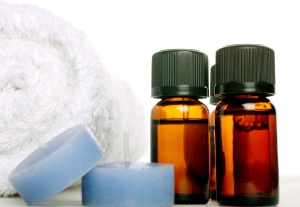Okay, here’s the deal, I don’t make blends to try to copy another existing product, PERIOD. Not to sound harsh or anything, but I have been receiving a number of requests for advice on blending….then when I offer to help, I am given a list of ingredients on the back of some product and asked to try to copy it (not in those exact words, but somewhat that way).
Every Aromatherapist has their own way of incorporating essential oils into their practice. Some make products such as perfumes or pre-calculated blends, while others use essential oils to incorporate into a massage treatment, for mood altering effects, and so on and so forth. As I have mentioned before, aromatherapy can be used in a vast number of ways. In my own practice, aromatherapy is incorporated into an aromatic treatment program for holistic care, intentional blending, and life balancing. As a nurse, I enjoy educating people on how essential oils can be used as a complementary treatment in conjunction with prescribed medications and their own medical plan of care. Once in a while, I may make a product- but that is often times intentional…like for an event, for someone’s healing practice intentions, for the season…or whatever I feel the energy in the air is calling for. Whatever the product may be, it’s custom made and/or made to fit a particular purpose, event, health concern, or intention. I have NEVER tried to copy an existing product because I STRONGLY believe that, in order to keep the integrity of my practice, customized blending is a MUST.
Now, let’s say that you noticed that a product with essential oils in it has a certain effect on you, and you like it, a lot. Then, fine, we can examine which essential oils are in that product, talk about what they each do and what they are used for, then talk about what YOU are looking for and then see if we can incorporate those essential oils (and maybe others that may help you with whatever you need) into your own custom blend. How’s that? I can do that.
See, the thing is, when people give me a list on back of a product, often times those ingredients are made for mass marketing….so the intention behind that product is most likely aimed at money making. I mean, you now, hey…it’s a business product. If you buy aromatherapy products made exclusively by an Aromatherapist, the energy and intention in that product is different. Most likely, the Aromatherapist made it with the good intention of helping others. They didn’t make a product because it just smells good or because the blend seems pleasing or helps a majority of people find relief and therefore…”let’s make money”. And, “how can you tell?” you may ask….because of the ingredients IN the product. Yes, I see essential oils are on the label…but what quality essential oils did they use? Did the people making the product even CARE about the quality, or were they focusing on the cost of the essential oil? PLUS, the other ingredients that are on those labels are CHEAP (the carrier oils used, the water, etc.) and include essential oil enhancing, stretching, or adulterating components…to enhance the essential oil aromas…meaning, the essential oils may work to some effect, but not the way they COULD . It SMELLS like there is a good amount of essential oil in there, but the other ingredients tell me that they put SOME essential oils in there but added other things to make them stand out more or stretch their smell.
So, you like buying “aromatherapy” product? Fine, so do I. But, just try to pay attention to WHO is selling you the product. Are there Aromatherapists behind the products (or some type of essential oil chemist or expert?) This is an important factor to take into consideration, because the aromatherapist KNOWS about the importance of quality essential oils and ingredients. They take this VERY seriously when making their products. Or is the company familiar with natural, organic ingredients? KNOW who you are buying these products from. I don’t sell products, but I know some Aromatherapists that do….and that is who I would buy products from. I have even bought products from farmers who produce essential oils……mmmmm, YUM!
Don’t believe me and think that I may be some angst Aromatherapist out for control and over thinking my profession? How about trying an experiment then? Try it! Buy a mass produced product that may be cheaper and have a STRONGer aroma of essential oils….then buy something lovingly made by a farmer, Aromatherapist (or Aromatherapist company), or organic ingredients producer that may have a more subtle aroma but may cost a little more. Compare the two after using for a while and see if you notice a difference? You will be amazed; it’s an eye opening experiment.
My clients, family, friends, and some colleagues tell me, without me asking them, that there is a difference in mass products versus intentional blending in the aromatherapy products they buy. Of course, I’m biased, but there is a significant difference to me.










